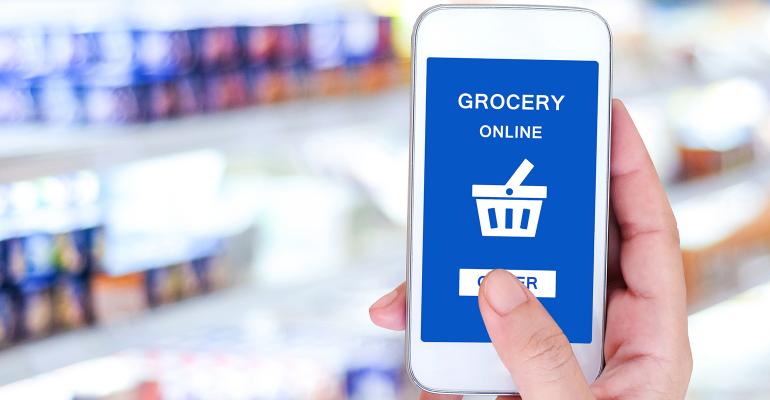Are you ready for the digitally engaged shopper? If you aren’t, you’re in trouble, according to new research by FMI and Nielsen presented Saturday at FMI’s Midwinter Conference.
The research, the initial findings of a three-year project, found that online food shoppers will reach maturation in the U.S. in the next decade. Twenty-three percent of households purchase food online today, a number that is expected to grow. By 2025, the research suggests that 20% of grocery spending will be online — that’s $100 billion in annual consumer sales.
One of the areas most affected by this shift online will be center store categories, where 40% of the volume is expected to migrate to online sales.
“We think center store can become very predictable over time and automated,” said Tom Furphy, CEO of Replenium. Furphy thinks traditional product subscriptions are on their way out. “Embrace automation; it’s coming. What does that mean to the center store and the flourishing of the perimeter? I think it’s a fantastic time.”
This doesn’t mean the perimeter won’t be affected. “We’re a little late to the digital party,” said Mark Baum, SVP, industry relations and chief collaboration officer for FMI, suggesting other industries like office supplies and banking got into the digital game faster. “It’s taken a longer time for consumers to determine what they want from online purchases and online experiences — as consumers gain confidence it will bleed from center store to perimeter.”
What retailers have to figure out is how to balance the customer experience and expectations online with those in brick-and-mortar stores. While digitally engaged consumers are growing, you can’t forsake the 80% of consumers who are shopping in your physical stores, said Dave Bornmann, SVP business development grocery, customer service and fresh for Publix Super Markets.
“This is not a technology question. It’s about knowing the consumer and meeting their experience expectations,” Bornmann said.
While the research showed retailers believe there is work to be done to provide a better online shopping experience, Baum said you can’t offer these services for free. “I haven’t found anyone to do my laundry without being paid. I don’t think we can take on the costs of delivery. You have to have fees but they must be reasonable.”
The research was the first phase of the digitally engaged shopper. The second phase will be the development of a digital toolbox to help retailers develop strategy and the third will be benchmarking.
You can learn more about the research at fmi.org/digital-shopper.





